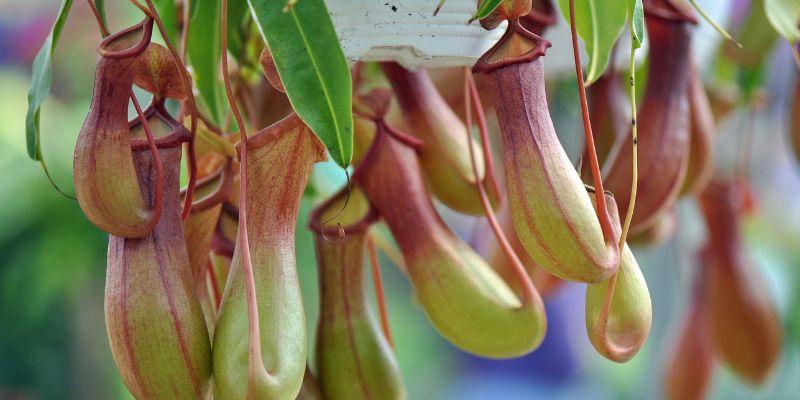For this post, Wonder at the World welcomes Åsa Jomård from ThinkDive to the blog to share her ideas about using animal and plant adaptations as inspiration in the classroom.
Animals and plants have developed ways of solving problems and working out how to survive on our planet for billions of years. Today, designers and inventors are studying nature in a more focused and intentional manner to create, design, and problem-solve.
This blog post will give you ideas for using physical adaptations to enhance understanding and challenge your pupils’ creative thinking and problem-solving skills.
What is adaptation in nature?
Animals and plants have adapted to living in many different environments. This means that they have special features that help them survive and live in certain places or habitats.
Different types of adaptations
Animals and plants use three different types of adaptation – physical (structural), physiological or behavioural.
- Physical adaptations describe what the animal or plant has
- Behavioural adaptations refer to what they do
- Physiological adaptation is a change in the internal environment of an organism or plant, for example, changes in cellular or metabolic levels.
Examples of plant and animal adaptations
There are so many adaptations in the natural world!
Polar bears’ thick fur is a physical adaptation to the cold environment. The powerful odour from glands that skunks produce to ward off predators is a type of physiological adaptation.
An example from the plant world is the way nettle plants sting as a way to defend themselves. Migration is an example of a behavioural adaptation that animals use to deal with seasonal changes. The behaviours are often learnt rather than inherited.
What is biomimicry?
The word biomimicry consists of two words – ‘bios’ which means life and ‘mimicry’ which means to imitate. Essentially, biomimicry is something that’s inspired by nature.
An often-used example of biomimicry design is Velcro. Exploring the history behind Velcro is a great introduction to not only plant adaptations but also biomimicry and creative thinking. Walking in the woods, Swiss engineer Georges de Mestral noticed how cockleburs stuck to his dog’s coat. Inspired by his observations he invented Velcro.
Georges de Mestral studied the burrs under the microscope. He realised that the small hooks of the burr and loops of his dog’s fur allowed the dried seeds to stick. The cocklebur plant has adapted to this way of spreading its seeds.
Camel Adaptations
Camels are large animals that have adapted to live and survive in extreme environments. They have adapted to the harsh desert environment, with extreme heat during the day and cold nights when the temperature drops after sunset.
Camels need fur so that they do not sweat too quickly when the sun is shining. Thus, the fur helps camels to stay cool in the heat and also keeps them warm when the temperature drops. The warm air is trapped in the thick fur, which helps the camel to stay cool.
Camels have also adapted in other ways to survive in the desert. Narrow nostrils allow them to keep out sand from their noses. Camels’ tough lips help them when they are eating plants with spikes. Walking in the sand is tricky and camels’ broad and flat hooves help them to not sink in the sand.

Design Project using Camels as Inspiration
Ask your pupils to identify adaptations used by camels to survive in deserts. Drawing a camel is a great way to learn and explore in depth adaptations used by an animal or plant. You can use post-it notes to label different unique features of the camel: thick fur, a hump, two rows of long eyelashes, thick eyebrows etc. This is a wonderful opportunity to mix science and art.
The challenge is to design something useful to humans using the special superpowers, adaptations, used by camels. Remember that it is rather tricky to design things, but often pupils surprise you with their creative solutions and ideas.
Scientists are working on new innovative technology that could be used to keep food and medical supplies chilled without requiring additional energy. Possible applications include insulating food storage, medical supplies and buildings.
Extra support for students
Coming up with ideas is not always easy.
You can use words or pictures as inspiration. Let your pupils roll a dice and use the ideas below as inspiration. They can always roll the dice again if they do not like the idea.
1. Coat for cold weather
2. Clothes for protection against the sun
3. House
4. Shoes for walking on sand
5. Water container
6. Your own choice
Using pitcher plants as inspiration
Pitcher plants are strange-looking plants that trap insects when they land on the pitcher’s rim. The insect ends up in a pool of digestive juices. The plant has developed a rim that ensures the insect or small animal cannot escape. There is a thin wet film on the rim’s surface, making it tricky for the insect to grab hold and escape.

Adaptations – Pitcher plant
Ask your pupils to identify adaptations that the pitcher plant uses to trap insects and small animals (all these adaptations are physical).
- Nectar at the pitcher’s rim
- Slippery surface inside the pitcher
- Digestive liquid at the bottom
Asking questions is a vital part of science.
Here you can ask your students:
- Why is there nectar on the edge of the pitcher?
- Why is the surface wet and slippery?
Design Challenge inspired by Pitcher plants
What can we design using pitcher plants as inspiration? This is a difficult challenge and there are no right or wrong answers or solutions.
Designers are working on new self-cleaning surfaces inspired by pitcher plants. One idea is to create materials that can permanently stay wet to stay clean!
Have fun using animal and plant adaptations as inspiration!
Books to accompany a biomimicry lesson
- Hardcover Book
- Nordstrom, Kristen (Author)
- English (Publication Language)
- 48 Pages – 07/13/2021 (Publication Date) – Charlesbridge (Publisher)
- Swanson, Jennifer (Author)
- English (Publication Language)
- 96 Pages – 06/23/2020 (Publication Date) – National Geographic Kids (Publisher)
- Ansberry, Karen (Author)
- English (Publication Language)
- 32 Pages – 05/01/2020 (Publication Date) – Dawn Publications (Publisher)
- Hardcover Book
- Dorion, Christiane (Author)
- English (Publication Language)
- 80 Pages – 04/06/2021 (Publication Date) – Wide Eyed Editions (Publisher)
Affiliate links. As an Amazon Associate, I earn from qualifying purchases.
Sign up for Wonder at the World emails
Want to connect? Sign up for emails from Wonder at the World and receive a free sunflower life cycle activity.
Read more about adaptations
Plant adaptations lesson with house plants
Winter adaptations – animals that change color in the colder months




